Final Thoughts and All Things McMurdo
As another field season draws to a close, we are now back in logistics mode wrapping up all our business here in McMurdo. All our field equipment must be broken down and returned to the BFC, radios go back to Comms, and lab space and rooms cleaned for departure inspections. Steve and I have been talking about the results of this field season, and we both agree it’s been a great success. We visited all the sites on our schedule (save the north side of Beaufort Island), and surveyed some new areas. (To download a Google Earth .kml file of all our tracks and waypoints from this season- click here. Zoom in from the helo tracks to see where we hiked). It will remain to be seen what the ages of the new sites are, but we suspect that our occupation model for the southern Ross Sea will hold. It appears that Adélies were widespread around the entire region prior to the LGM (Last Glacial Maximum), then were pushed north by the advancing Ross Ice Shelf (where they went then is an interesting puzzle we would like to solve, but that is unlikely since sea level was ~150 m lower then and sites would be underwater today). Then as the shelf retreated around 7,500 years ago, the penguins began to occupy the northern sites first, showing up in Terra Nova Bay around 6,000 years ago and spreading out along the coastline. Exceptionally warm conditions 4,000 to 2,000 years ago allowed the most southern expansion of maternity colonies along the Scott Coast, with birds present at Marble Point until 1,800 years ago, and then sea ice became too persistent along the southern coast and they left. The occupation of the Ross Island colonies began quite recently (geologically-speaking), with Cape Bird occupied by 1,000 years ago, and Capes Crozier and Royds only hosting colonies over the past 500 years or so. It is likely we found older sites from Cape Bird this season that will hopefully date to the 4-2 ka “penguin optimum” but we think the dates we’ve already determined for Royds and Crozier will stand. The big colony on Beaufort Island is still of unknown age, but the preservation of bones and feathers in the deepest occupation layer make us think it is not older than 1,000 years. And its resemblance to the low-relief, low-elevation configuration of Cape Adare far to the north supports the idea that it is relatively young. The results from DNA, isotope ratios, and food remains will all have to wait for many months of laboratory analysis back in North Carolina.
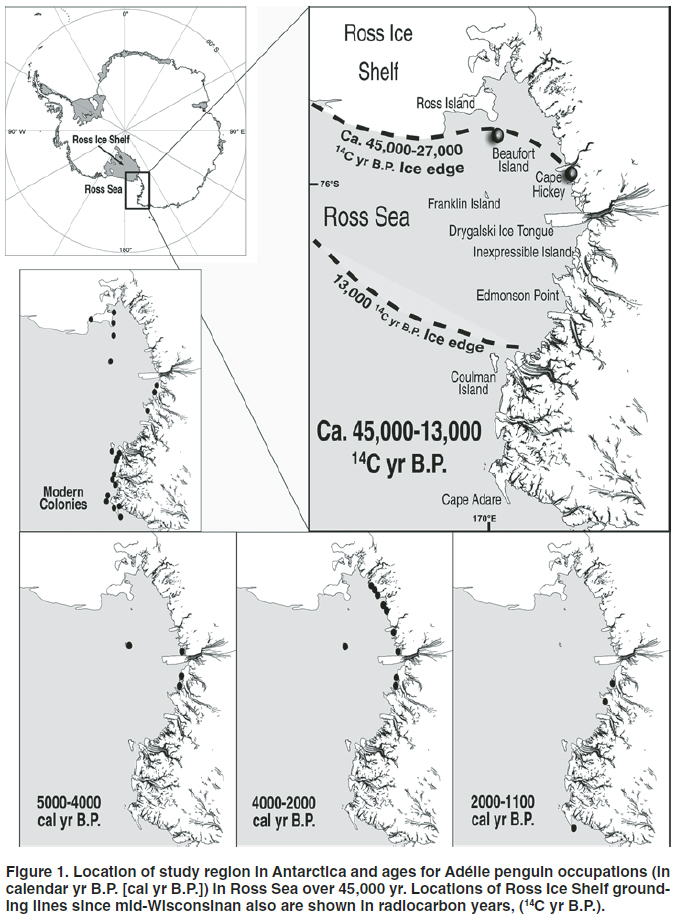
Occupation chronology of the Ross Sea region, from our Emslie et al., 2007 paper.
As we get ready to leave for destinations north once again, I have been reflecting on the unique culture that is McMurdo, the largest national presence in the Antarctic, and the hub of operations for the entire continent. Below I have included some images that give you a taste of the uniqueness of the place and the culture- the blend of the everyday, utterly mundane juxtaposed with the utterly exotic and bizarre provides an ambience like nowhere else on Earth. In no particular order I present “All Things McMurdo”.
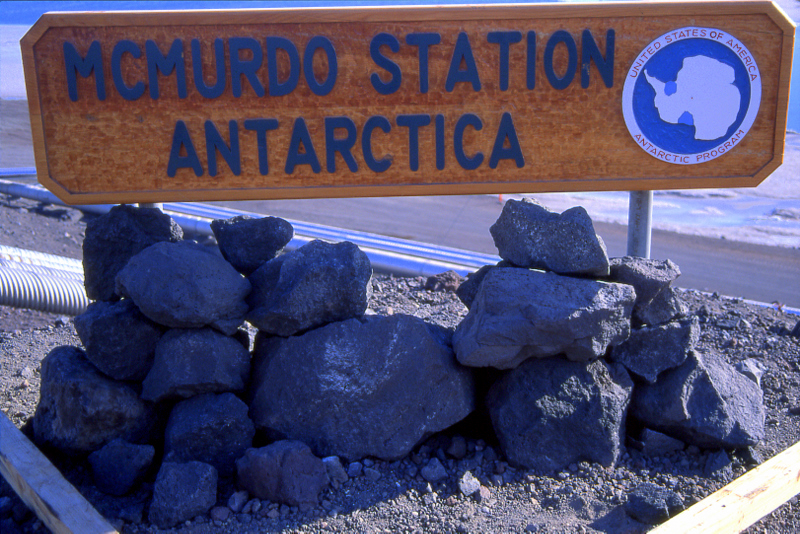
DV’s (Distinguished Visitors): For a variety of reasons all sorts of notable personalities show up down here during the season. Presidents have visited, and this year the star of documentary films and science, Sir David Attenborough, was here with the BBC and Discovery Channel to film a new program to complement the Planet Earth series, titled Frozen Planet. While here, he gave a lecture for the McMurdo Science Lecture series on his work with the “Birds of Paradise” of southeast Asia. Yesterday we were visited by some other DV’s- the Secretary of the Navy Ray Mabus was here, accompanied by 3-Star General “Hawk” Carlisle. They spent a little time with us in our lab as we explained the work we are doing, and letting them admire and touch the Adélie specimens that Eva prepared.
Sir David Attenborough lectures in the galley on the Birds of Paradise (left), and DV's in the lab: General Hawk Carlisle, Navy Secretary Ray Mabus, and Steve (right).
Resupply: Not surprisingly it takes an enormous amount of everything to keep this place running, and so the arrival of the transport ships every season is a massive and critical enterprise. First the oil tanker arrives, and offloads 1,000s of gallons of fuel, then the transport ship arrives and the entire working staff of the base is involved in “offload”. All alcohol sales cease for the duration, and people are on rotating shifts to unload containers, unpack them and stow away the goods inside, then repack the containers with “retro” materials that are heading back north. It’s an amazing choreography, and has been done so many times that it’s incredibly efficient- this year they had the ship unloaded in only 2 days!
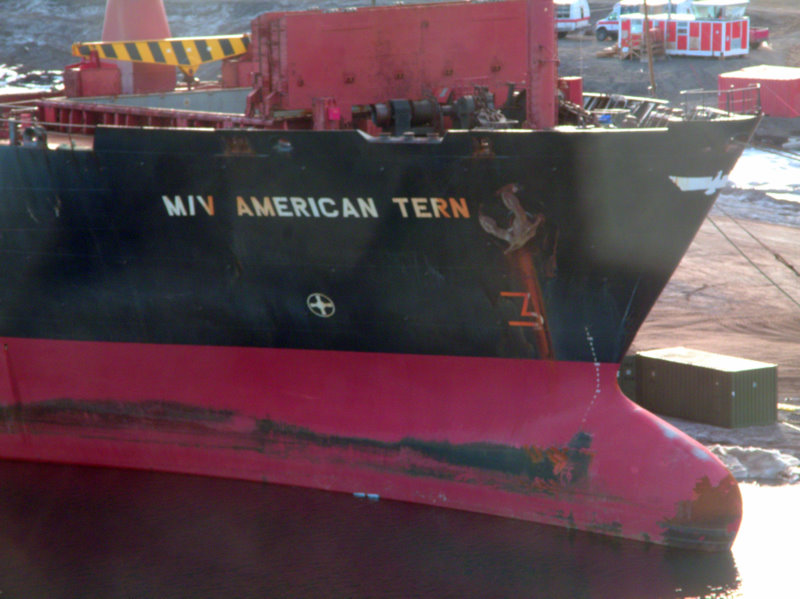
Resupply tanker Paul Buck (left), and transport ship American Tern (right)- both Finnish Ice Class 1A vessels.
Time lapse film of offload in 2006, a past entry in the McMurdo Film Festival.
The South Pole Traverse: I’m still not sure why this story has not hit the mainstream media and excited intense interest around the world, perhaps it’s purposefully being kept mum to prevent too much scrutiny? But the US also maintains a year-round base right on the South Pole, on an icecap several kilometers thick and at over 9,000 feet elevation. In the summer months several hundred workers and scientists visit for various projects, and in winter a skeleton crew of 30 stay behind to maintain the base. It takes a lot of fuel and supplies to keep it running too, and since there are many air operations that originate from Pole, huge amounts of jet fuel must be available there as well. Since the only way to access the station is by air, all supplies are flown in at great cost. Imagine the transportation costs of flying LC-130s to the Pole to unload all their extra fuel into tanks, then flying back to do it again. So a very old idea has been revived- it’s cheaper to drive supplies to the Pole using a tractor wagon train that tows huge sleds with bladders carrying fuel! The South Pole Traverse has now been successful for a couple of seasons (although last season they didn’t make it). The trip takes almost 40 days, and safety experts with ground penetrating radar and explosives lead the column to deal with monster crevasses that block the way. The machines they use are modified agricultural equipment that is now exclusively tasked for the traverse, and these enormous, powerful snow machines roll back into McMurdo at the close of each traverse season.
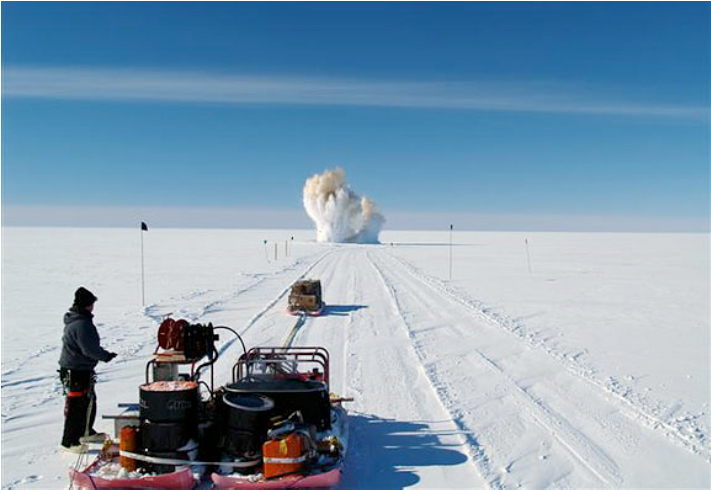
One big, bad boy! A South Pole Traverse vehicle (left), and blasting closed crevasses on the South Pole trail (right).
And speaking of the South Pole- the old, decrepit dome structure that used to house the base was replaced by a new, state-of-the-art pylon-seated building a few years ago, and the big news this season was the demolition and removal of the old dome structure.
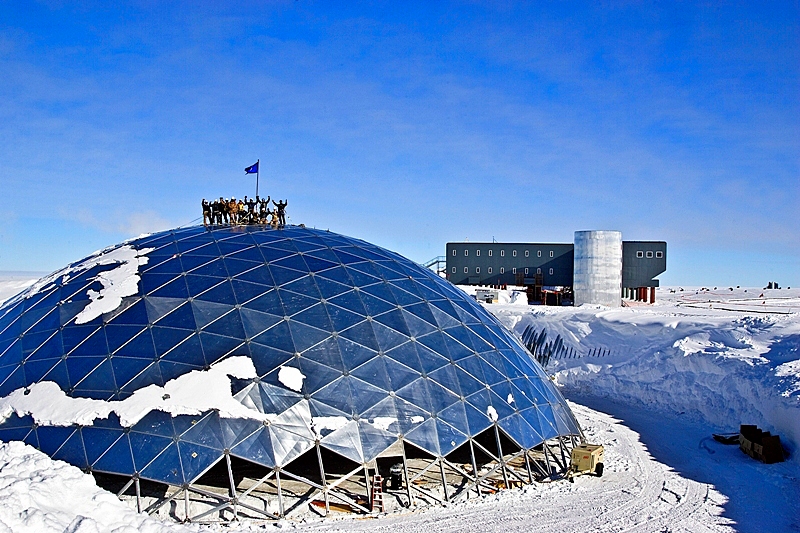
Before and after shots of the demolition of the South Pole Dome this season.
McMurdo Culture: Finally, I offer a few thoughts on my perceptions on work and life for the folks that come down here to support the science and work on-base. From those who I’ve spoken too, and from conversations I’ve overheard, I suspect that almost everyone comes down here originally for all the reasons you would expect. Tough Alaskans, stoic Minnesotans, hardy Montanans all travel here for the cold, the solitude, and a chance to see one of the last untrammeled landscapes on the planet. The windiest, wildest, driest, coldest continent is sufficient draw alone for many of the folks who end up down here (there are some exceptions- Mia from New York City that went with us to Tent Island is certainly an exception to my expectations). But once they get down here, except for the elite few who have jobs that allow them to travel widely about the continent (NSF reps, helo pilots and techs, a select subset of FSTP personnel), most quickly find that outdoor opportunities are exceptionally limited- McMurdo has more trails than when we last visited, but these add up to only a total of 24 miles when the sea ice routes are available, and less than 15 miles when they are not. For most hikers it only takes a couple of days to complete all the available hikes. With outdoor possibilities so limited, most of the residents turn inwards- towards new friends, co-workers, and the greater community, and away from the wilderness visible around them but out of touch. This was demonstrated to me when one of the carpenters that went with us to Cape Crozier to winterize the hut finished up the job- he sat down on the step with a duck-hunting magazine and commenced reading, not bothering to walk around the corner and take in the incredible views of the colony, ice shelf, and ocean beyond. Instead, it seems that most McMurdites celebrate holidays, birthdays, and the passing of benchmark moments of the metronome of summer season: Winfly in August when the first planes arrive ending the winter-over’s isolation, MainBody in October when the full summer crew arrives, Offload in early February, and finally departure in late February when everybody but the winter-overs at the two bases depart for points north. The community plays music together, creates art, expresses humor, and looks out for one another. There is also a darker side of interaction on a base of this size- “lost” items vanish from common areas, some succumb to overindulgence in alcohol and other forms of self-medication, and occasional physical conflicts arise (I haven’t heard of any this season, but in seasons past it was an infrequent but occasional occurrence).
All that's needed to keep time on sunny days- 24 hour sundial in McMurdo (left), and a sea anenome in the Crary aquarium (right).
McMurdo humor- missing cat poster in Building 155 (left), and a real Antarctic pet, anurban skua waiting for human treats (right).
Lasting impressions for most first-time visitors here include the awesome facility and staff at the Crary Science Center (where we have our lab right next to the Aquarium), the REI of Antarctica in the Berg Field Center (BFC), where you can check any item of field equipment you could ever dream of (maybe not flip-flops, but that’s about it!), and the huge galley with its impressive paintings and photos that decorate its walls. While dinners are often as mediocre as the cafeteria food required to keep over a thousand personnel fed, the dessert counter is as impressive as any I’ve ever seen. Finally, one of the cultural events that has gained popularity over the years is the annual film festival, with budding filmmakers producing their best take on all things McMurdo. We amused ourselves during off hours in the lab watching some of these efforts, and we were actually in the background when a new one this year was filmed in the galley. I include a link below to one of the better efforts- an explanation of why bowls are always in short supply in the galley.
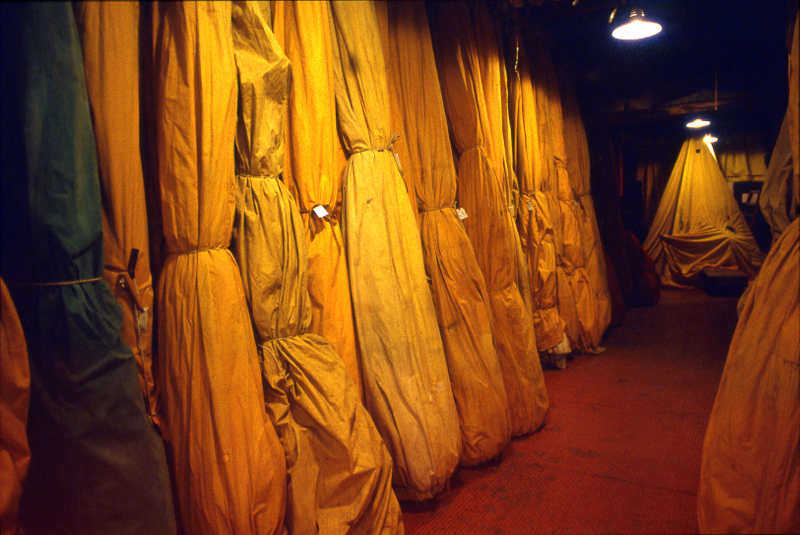
Scott Tents ready for use in the BFC, the REI of Antarctica (left), and dorms in McMurdo (our building 203C on the left), with Ob Hill behind (right). That's Eva and Jurek on the summit.
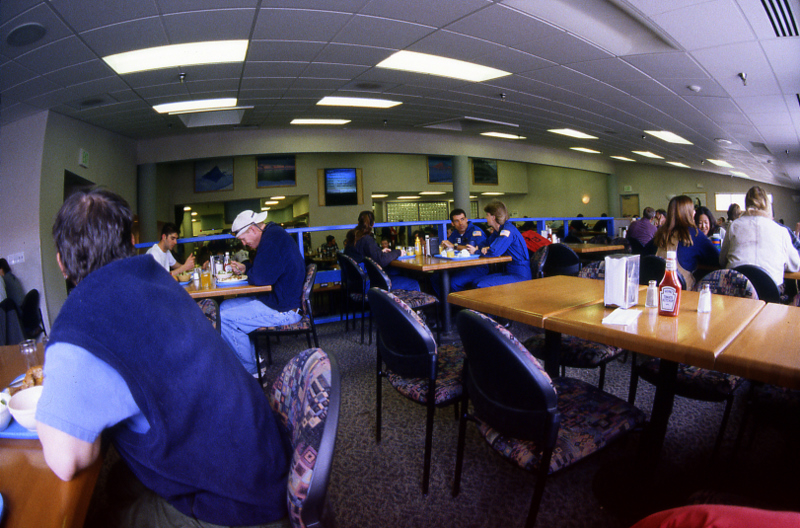

The huge, modern galley at McMurdo (left), and a dessert tray with Smore cupcakes- only one of several offerings every night! (right).
One of my favorites from a past year's film festival: Bowl on the Run.
So that’s about it from down south for this field season. I hope you’ve found the updates informative, and they will inspire you to want to learn more about this amazing place. We have two more seasons on the current NSF grant- Steve will visit the Chinese station Great Wall on King George Island in the Antarctic Peninsula with Liu next season (2011), and then we’ll be back down here the following season, in 2012. Our plans then will be to dedicate the entire season to an extended stay at Cape Adare at the northern tip of Victoria Land. That attempt will be the most challenging of our Ross Sea investigations, and seriously logistics and condition dependent. Until then, best wishes from Antarctica!